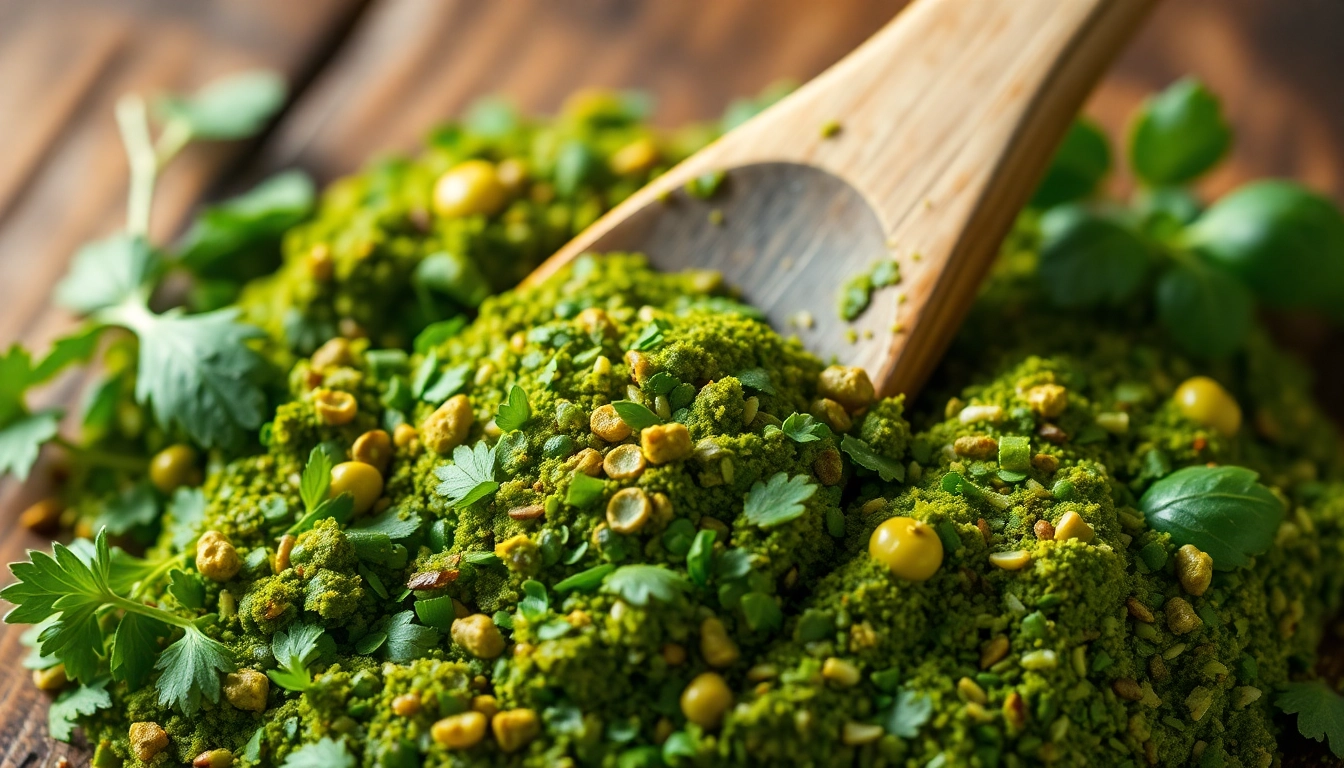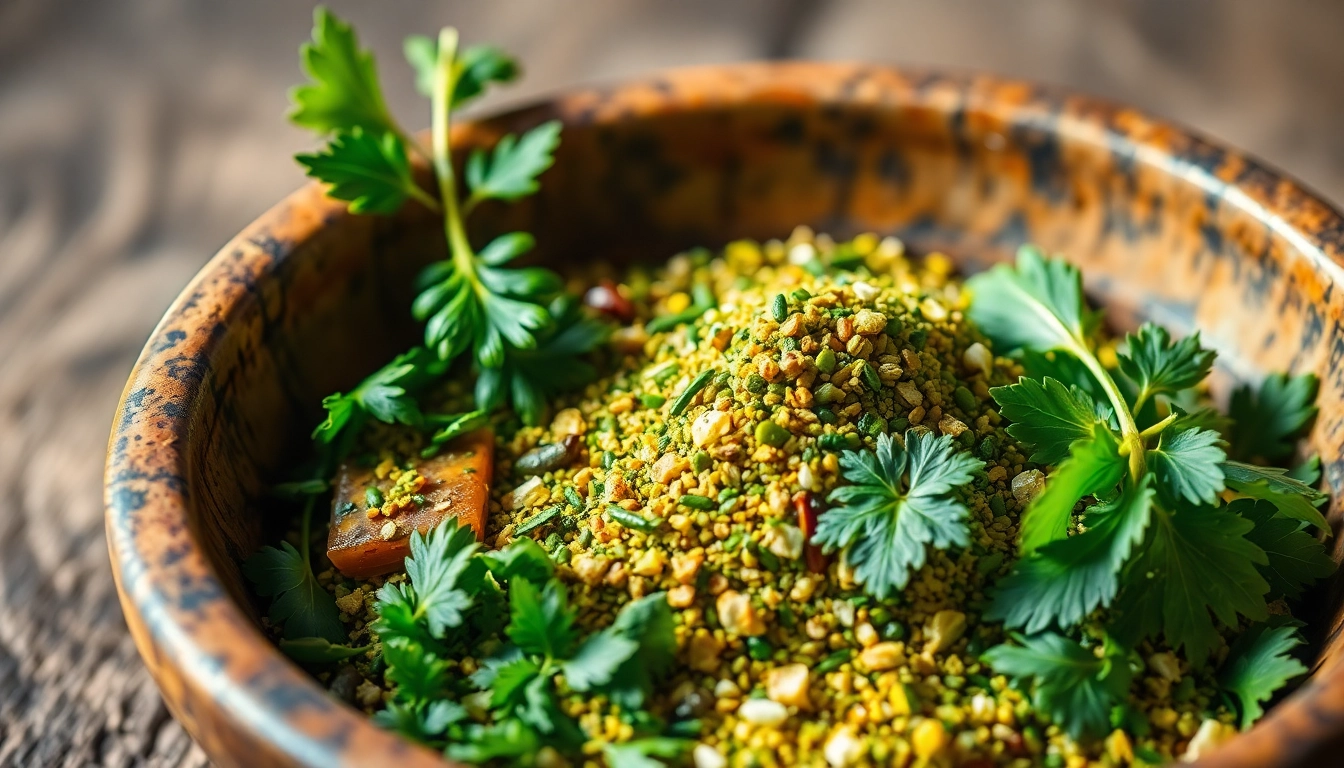Unveiling the Art of Green Masala Paste: An Ultimate Guide to Flavor, Quality, and Export Potential
Green Masala Paste is an essential culinary ingredient cherished across diverse cuisines for its vibrant flavor and versatility. As a renowned Green Masala Paste, it serves as a cornerstone in preparing authentic dishes ranging from traditional Indian curries to contemporary fusion recipes. This guide delves into the origins, preparation, quality assurance, health benefits, and expansive export opportunities of this flavorful product, empowering food entrepreneurs and exporters to harness its full potential in the global market.
Understanding Green Masala Paste and Its Culinary Uses
What is Green Masala Paste and Its Traditional Origins
Green Masala Paste is a vibrant mixture of fresh herbs, spices, and other natural ingredients ground into a smooth, aromatic blend. Rooted in centuries-old culinary traditions, particularly in Indian cuisines such as Gujarati, Rajasthani, and South Indian, this paste encapsulates the essence of fresh herbs like coriander, mint, green chili, and curry leaves, combined with spices like cumin, coriander seeds, and garlic. Its origins lie in regional recipes that emphasize fresh, wholesome ingredients to create flavorful, nutritious dishes that cater to both daily meals and festive feasts.
Historically, this paste was prepared fresh in households and local eateries, serving as a quick flavor base for various curries, chutneys, and marinades. Over time, commercial producers like Spice Nest have perfected the art of authentic green masala paste, maintaining traditional recipes while employing advanced manufacturing techniques to preserve freshness, flavor, and nutritional value for export and large-scale distribution.
Popular Dishes Using Green Masala Paste
Green Masala Paste is an indispensable component in a variety of dishes worldwide. Classic Indian recipes such as Palak Paneer, Green Chicken Curry, and Mastani Veg Biryani owe their distinctive flavors to this vibrant paste. It also enhances international cuisines—adding depth to Thai-style green curries or Middle Eastern grilled meats.
In modern culinary trends, chefs integrate green masala in wraps, salads, and marinades, leveraging its fresh, medicinal aroma and spicy heat. Its adaptability makes it perfect for quick cooking, reducing preparation time while ensuring an authentic taste profile.
Regional Variations and Flavor Profiles
While the core ingredients of green masala remain consistent, regional variations introduce unique flavor nuances. For instance:
- Gujarati Style: Emphasizes coriander and mint with a hint of lemon, creating a tangy, herbaceous profile suitable for dishes like Dal Dhokli.
- Rajasthani Style: Includes roasted spices and dried herbs, imparting a smoky depth ideal for hearty gravies.
- South Indian Style: Incorporates coconut and curry leaves, providing a rich, aromatic flavor for sambar and chutneys.
This diversity allows manufacturers to tailor recipes for targeted markets, emphasizing authentic regional flavors to satisfy local preferences and stand out in international markets.
Choosing Quality Ingredients for Green Masala Paste
Fresh Herbs and Spices: Selection Tips
Quality begins with the selection of fresh, high-grade herbs and spices. For green masala paste, sourcing fresh coriander, mint, green chilies, and garlic from certified suppliers ensures robust flavor and vibrant color. Manufacturers like Spice Nest prioritize sourcing organic and pesticide-free ingredients, adhering to international quality standards. Freshness is key; hence, using herbs within their peak season and proper storage maintains their aromatic oils and nutrients.
Storing and Preserving the Paste’s Freshness
To maintain the green masala’s vibrant color and flavor, storage at low temperatures in airtight containers is essential. Paste can be refrigerated for up to a week or frozen for longer shelf life, typically 3-6 months, without significant flavor degradation. Employing advanced freezing techniques, such as blast freezing, preserves nutrients and prevents microbial growth, making the product suitable for export.
Authentic vs. Commercial Green Masala Paste: What to Look For
Authenticity hinges on ingredient purity, minimal preservatives, and traditional recipes. Commercial brands often add preservatives or artificial colorants, which can diminish flavor and nutritional value. Choosing certified manufacturers like Spice Nest ensures products are made from natural ingredients, conform to food safety standards (ISO, HACCP), and remain true to traditional flavor profiles. Transparency in labeling, ingredient sourcing, and manufacturing practices further guarantees authenticity and consumer confidence.
Step-by-Step Preparation of Green Masala Paste
Essential Kitchen Tools and Equipment
Preparing green masala paste at home or on a small scale requires a robust set of kitchen tools: a heavy-duty mortar and pestle or a high-powered blender, cutting knives, measuring spoons, and airtight storage containers. Commercial producers utilize industrial grinders and homogenizers to achieve consistent, fine-textured paste suitable for mass production and export.
Preparation Process: From Cleaning to Grinding
The process begins with thorough cleaning of fresh herbs and spices to remove dirt or residues. Herbs like coriander and mint are washed and air-dried. Spices are roasted lightly to enhance aroma if desired. The herbs and spices are then chopped coarsely before being ground into a smooth paste, adding liquids such as oil, lemon juice, or water to aid grinding and preserve freshness.
Tips for Achieving the Perfect Texture and Flavor Balance
Balancing flavor involves adjusting quantities of herbs, spices, and liquids. For a silky, smooth texture, ensure that ingredients are finely ground and free of fibrous stem bits. Incorporating a small amount of natural oil, like mustard or sesame oil, helps enhance aroma and stability. Consistent blending time and ingredient ratios achieved through precise recipes ensure uniformity across batches.
Health Benefits and Nutritional Value of Green Masala Paste
Rich in Antioxidants and Vitamins
Green masala is packed with antioxidants from herbs such as coriander and mint, which support immunity and detoxification. It provides a rich source of vitamins A and C, essential for skin health and immune function. Spices like cumin and garlic add anti-inflammatory properties and promote digestion.
Healthier Substitutes for Store-Bought Pastes
Homemade or certified fresh green masala paste contains no artificial preservatives or additives, making it a healthier alternative to processed store-bought options. It reduces the intake of MSG, synthetic colors, and stabilizers, fostering better overall health.
Incorporating Green Masala Paste into a Balanced Diet
This paste can be integrated into balanced meals by using it as a marinade for proteins, a flavor boost in vegetable stir-fries, or a base for soups and stews. Its nutrient density enhances meal quality while adding exciting flavor layers, encouraging healthier, flavorful cooking.
Marketing and Export Opportunities for Green Masala Paste
Export Trends and Global Demand
The global demand for organic, authentic, and traceable spice products is soaring. Markets like the Middle East, Europe, North America, and Southeast Asia highly value traditional recipes, especially Green Masala Paste, for their health benefits and flavor authenticity. Exporting certified, high-quality green masala paste taps into this lucrative and expanding segment.
Branding and Packaging Strategies
Effective branding emphasizes tradition, purity, and health benefits. Eco-friendly packaging, clear labeling of ingredients, certifications (such as Organic, FSSAI, HACCP), and attractive visuals boost consumer trust and market appeal. Providing ready-to-use formats and easy resealability enhances convenience, appealing to modern retail and foodservice sectors.
Compliance with Food Safety Certifications and Standards
Adhering to international standards like ISO 22000, HACCP, and GMP ensures safety and quality. Certifications not only facilitate smooth export procedures but also reinforce a brand’s reputation for reliability. Spice Nest, as a certified manufacturer, optimizes its export readiness by maintaining rigorous quality management systems and continuous compliance updates.

